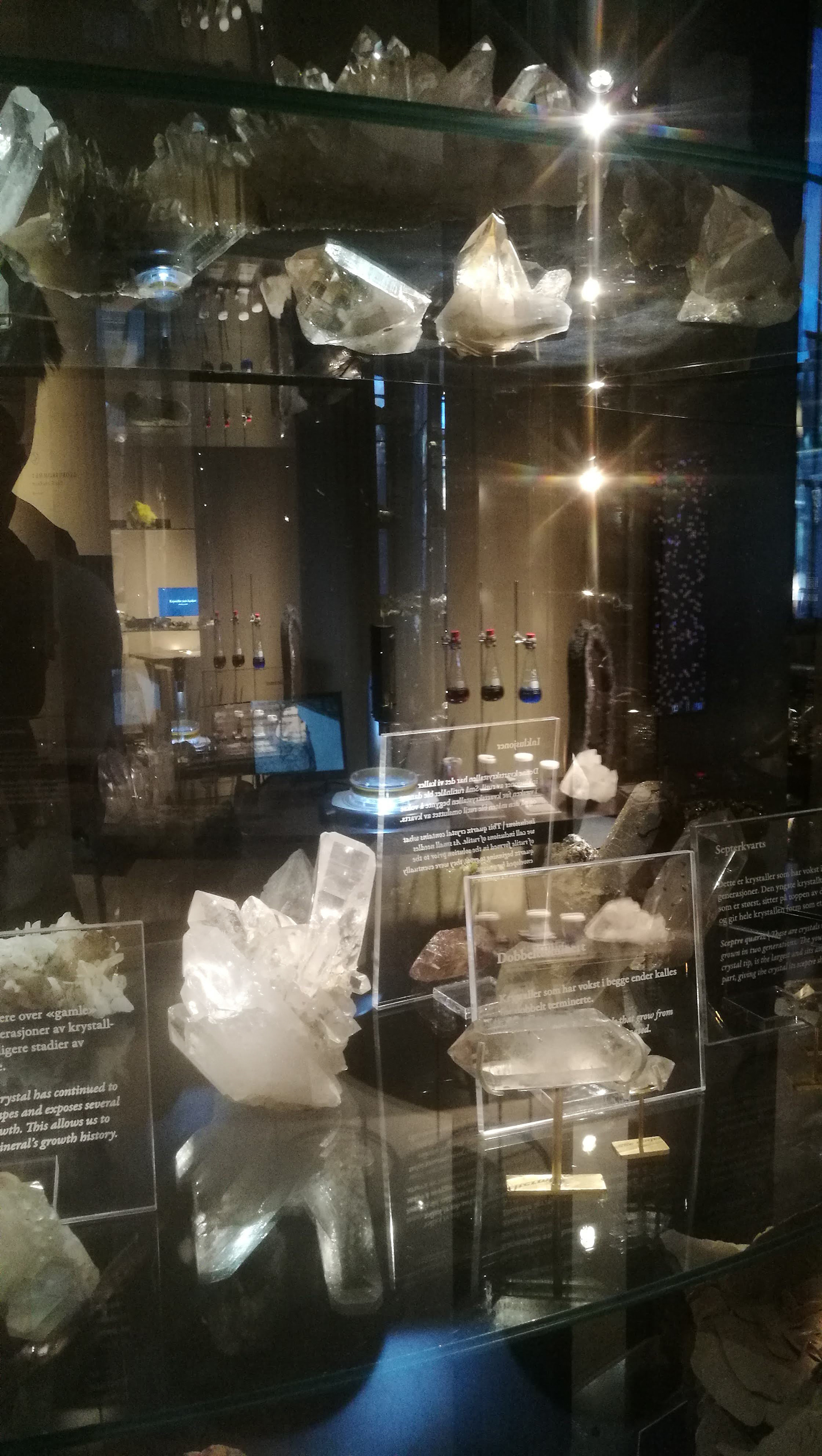
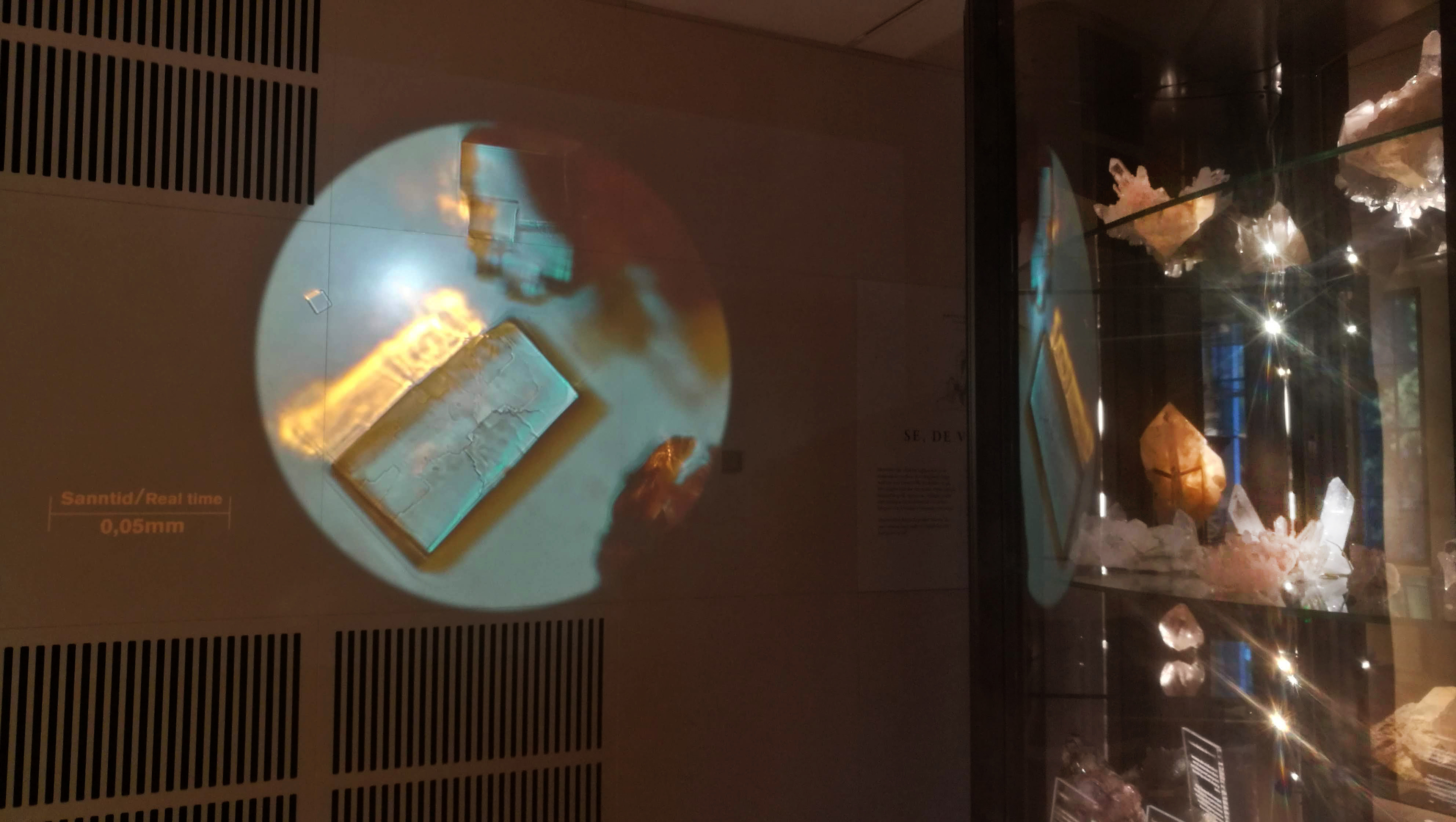
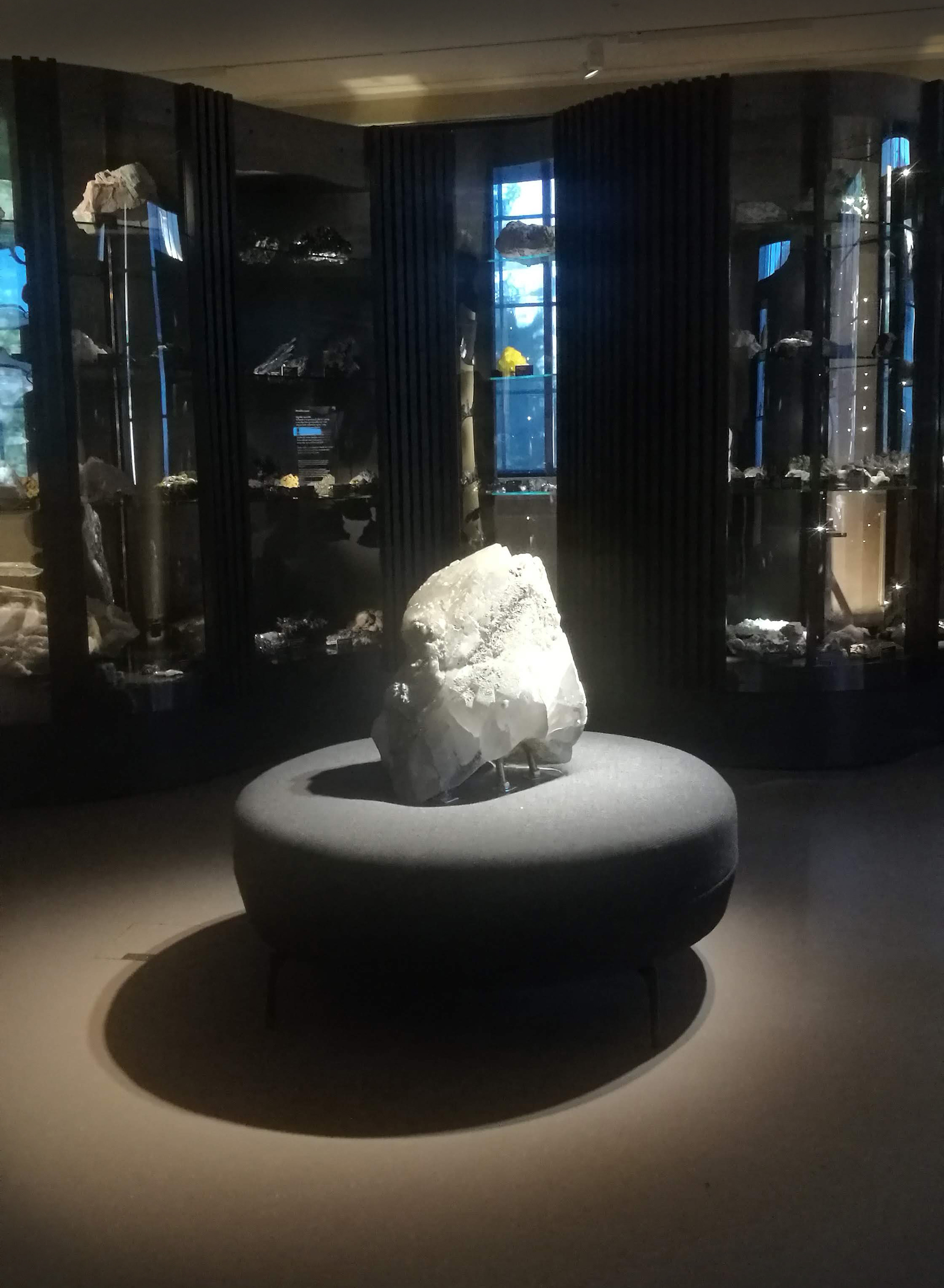
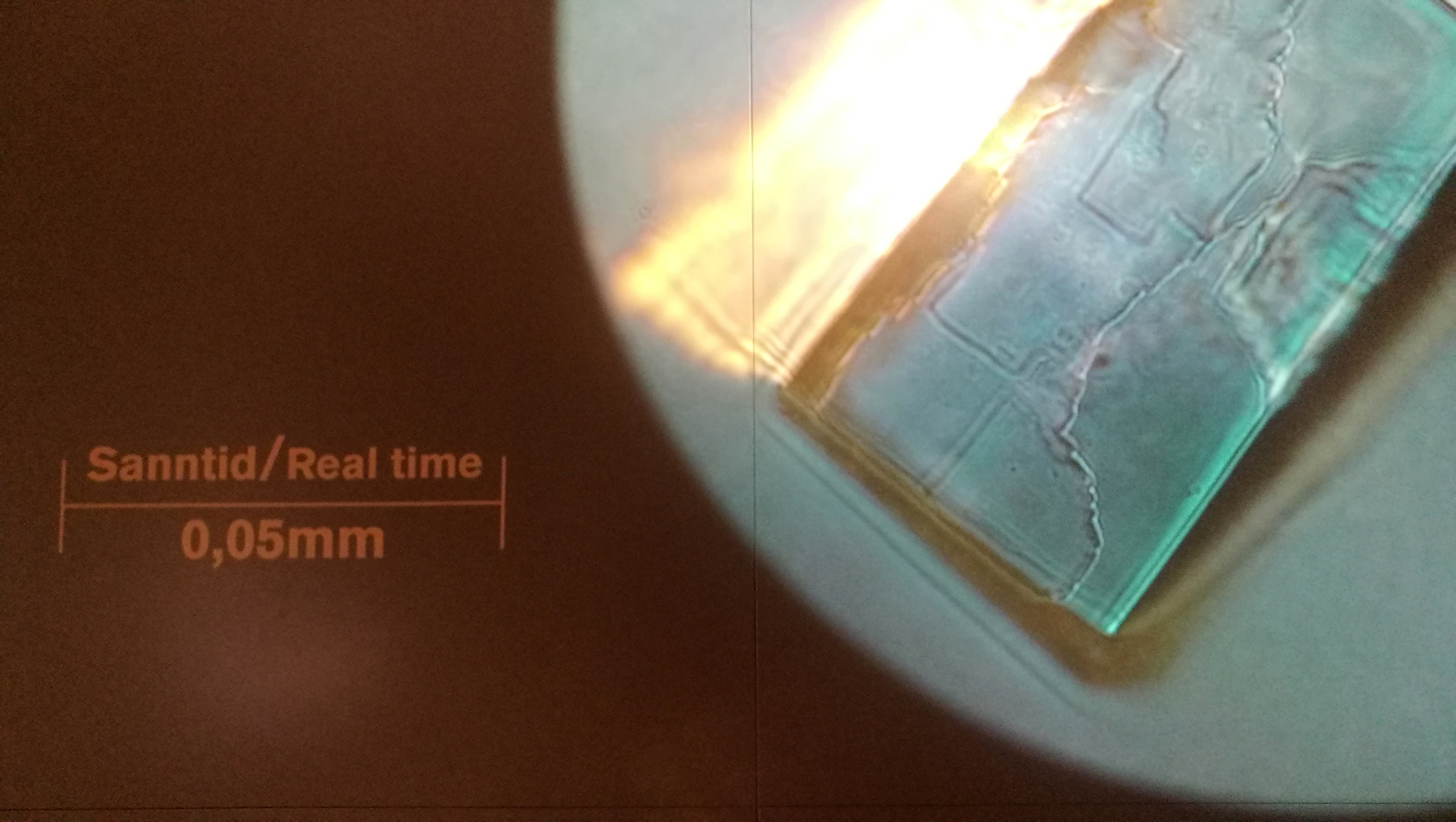
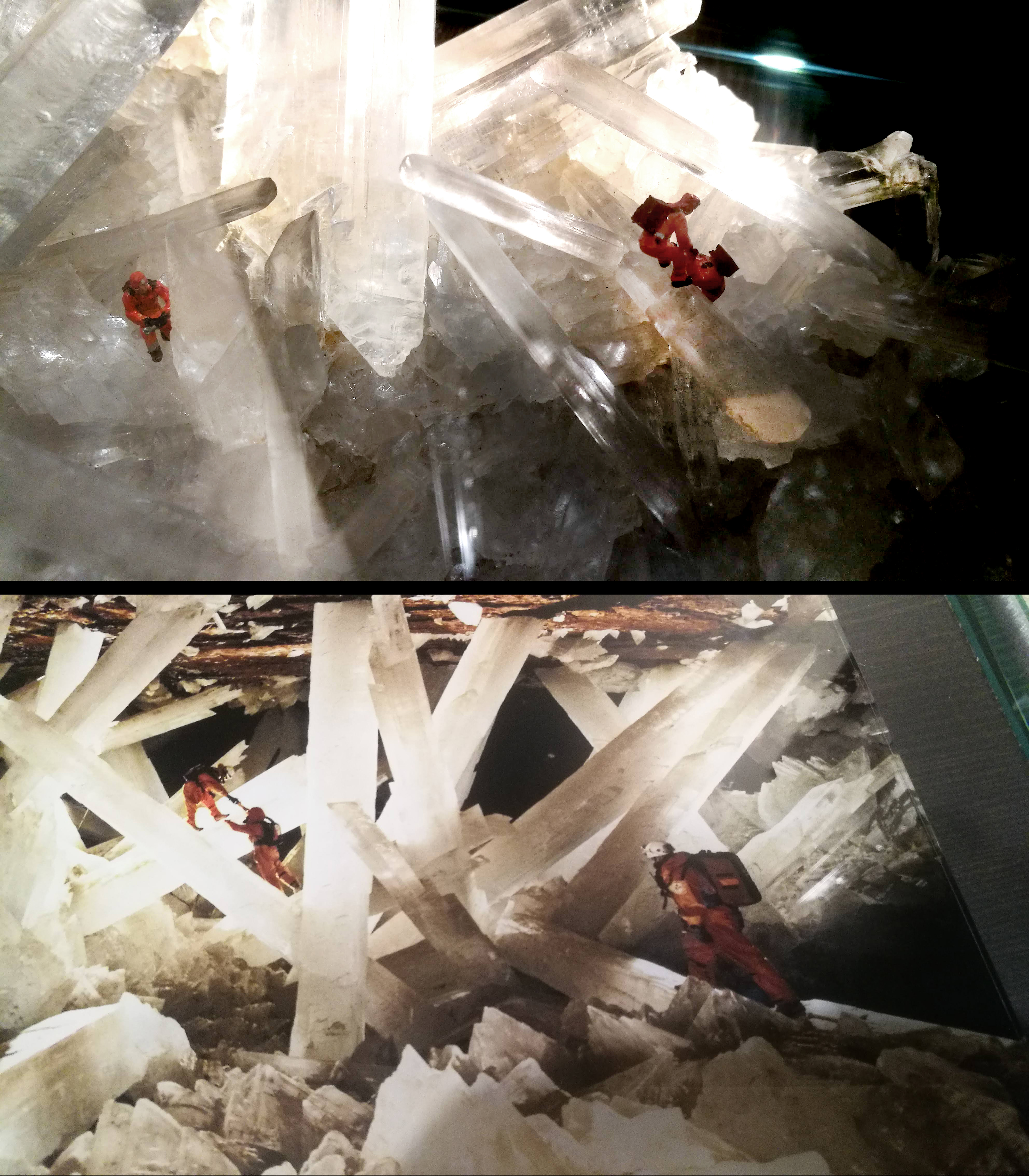
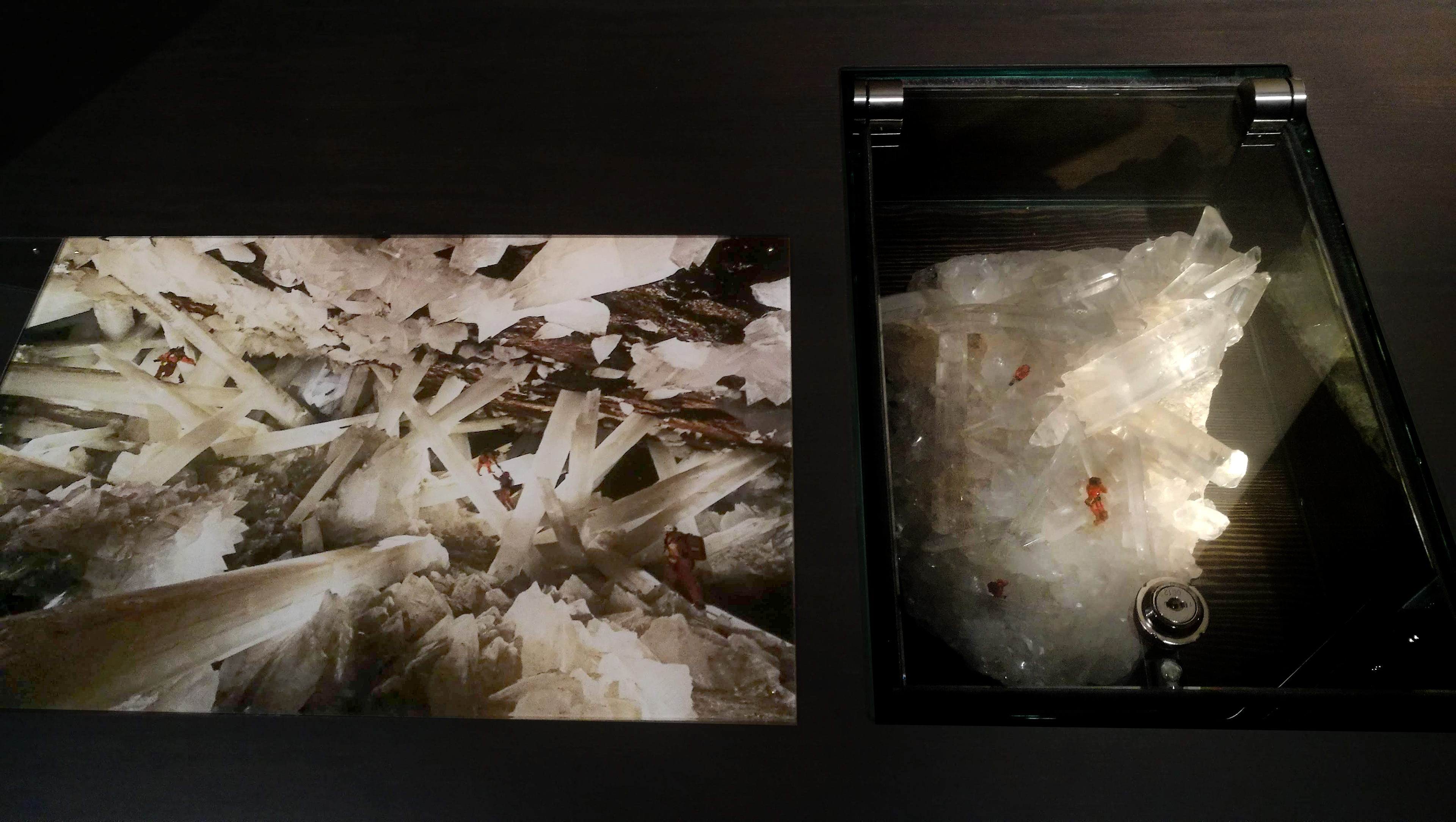
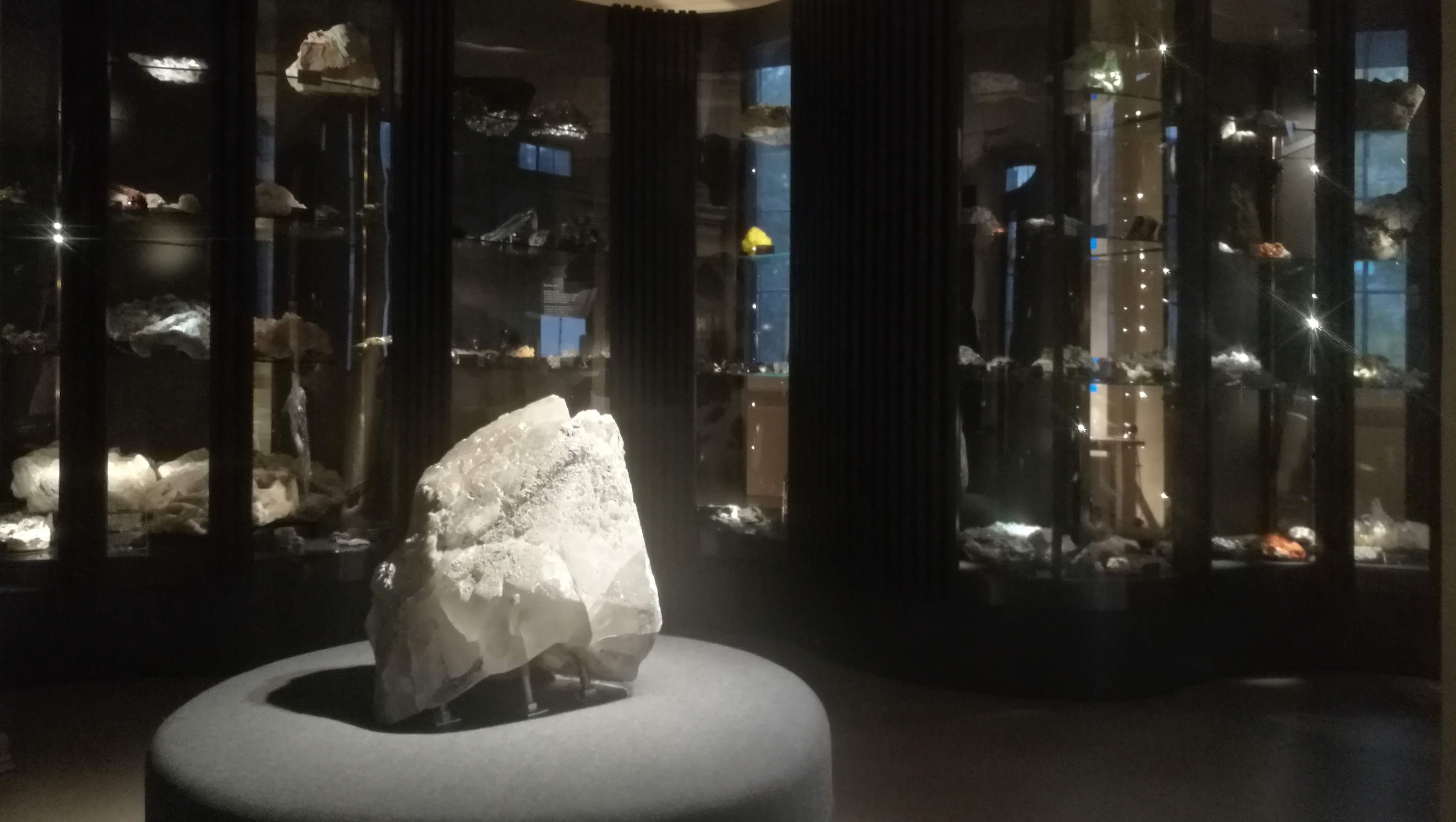
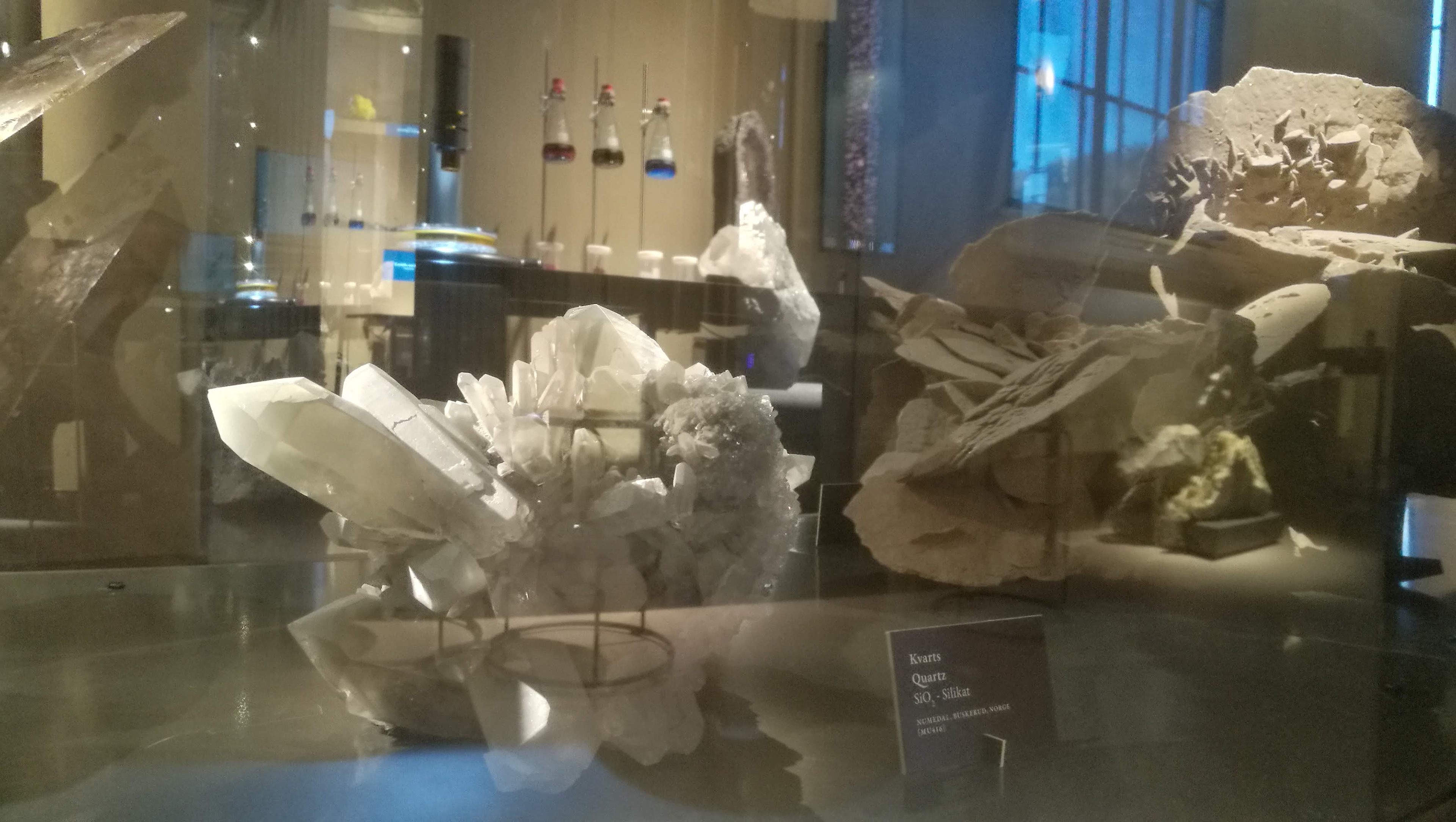

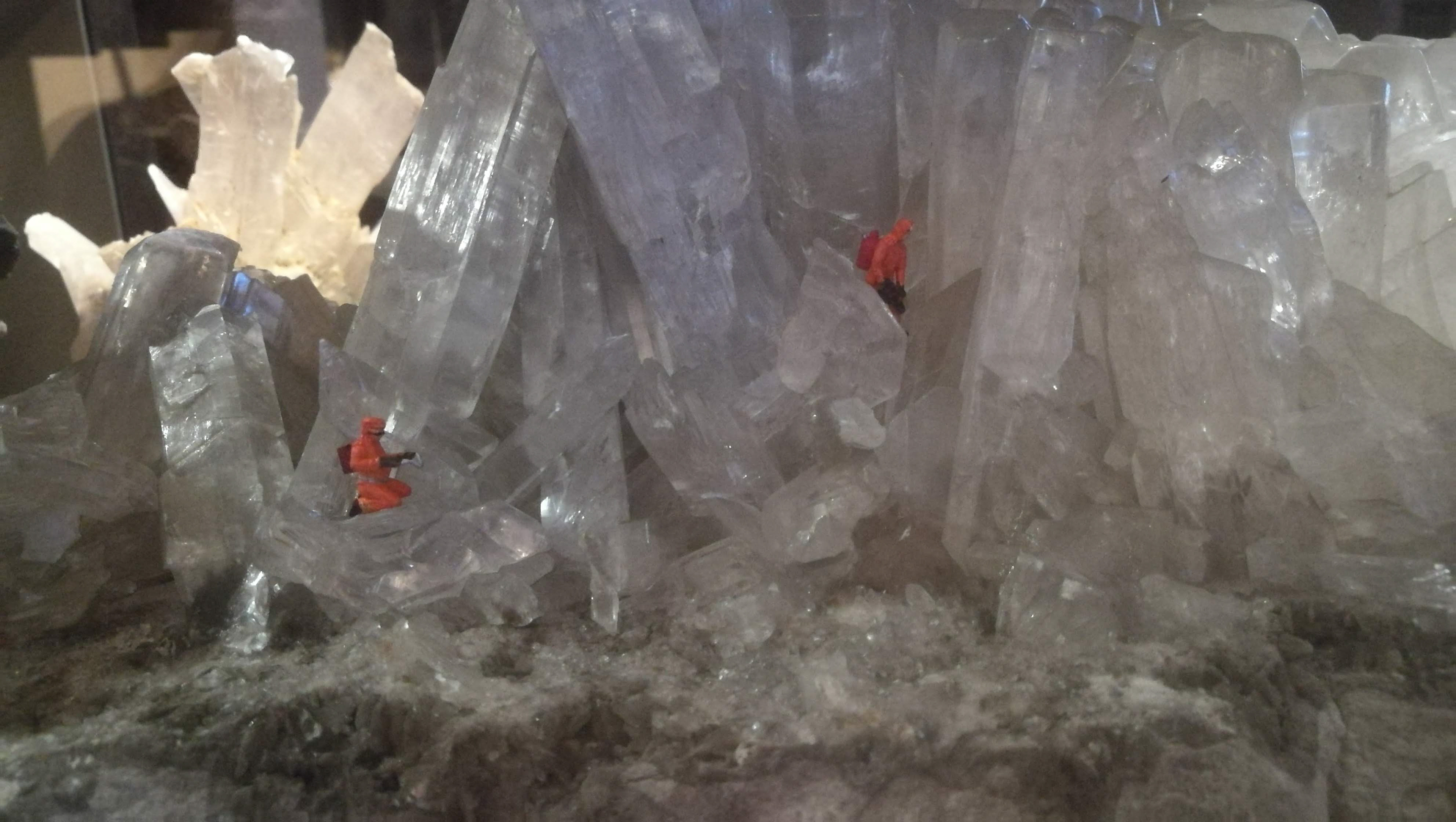
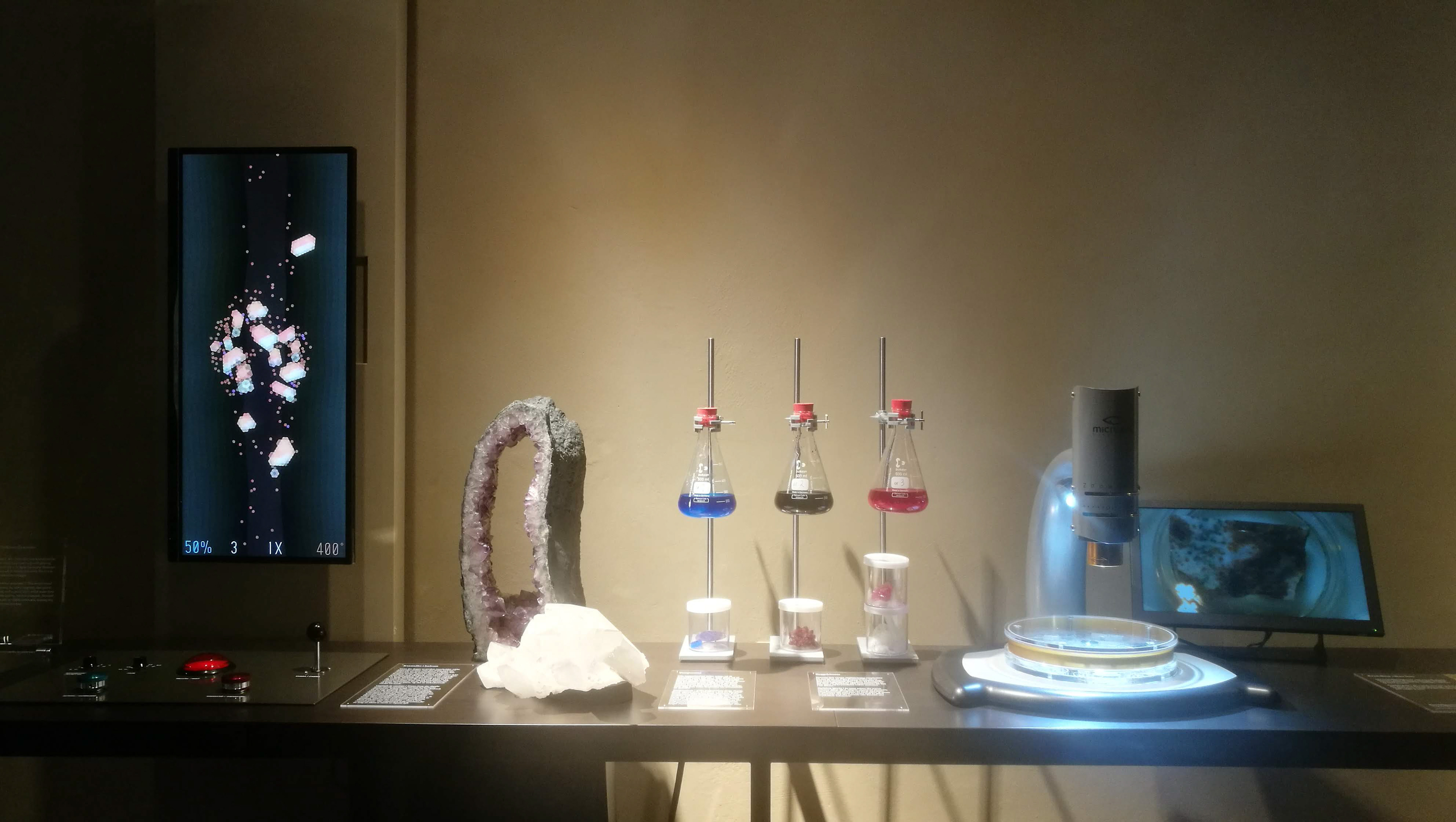
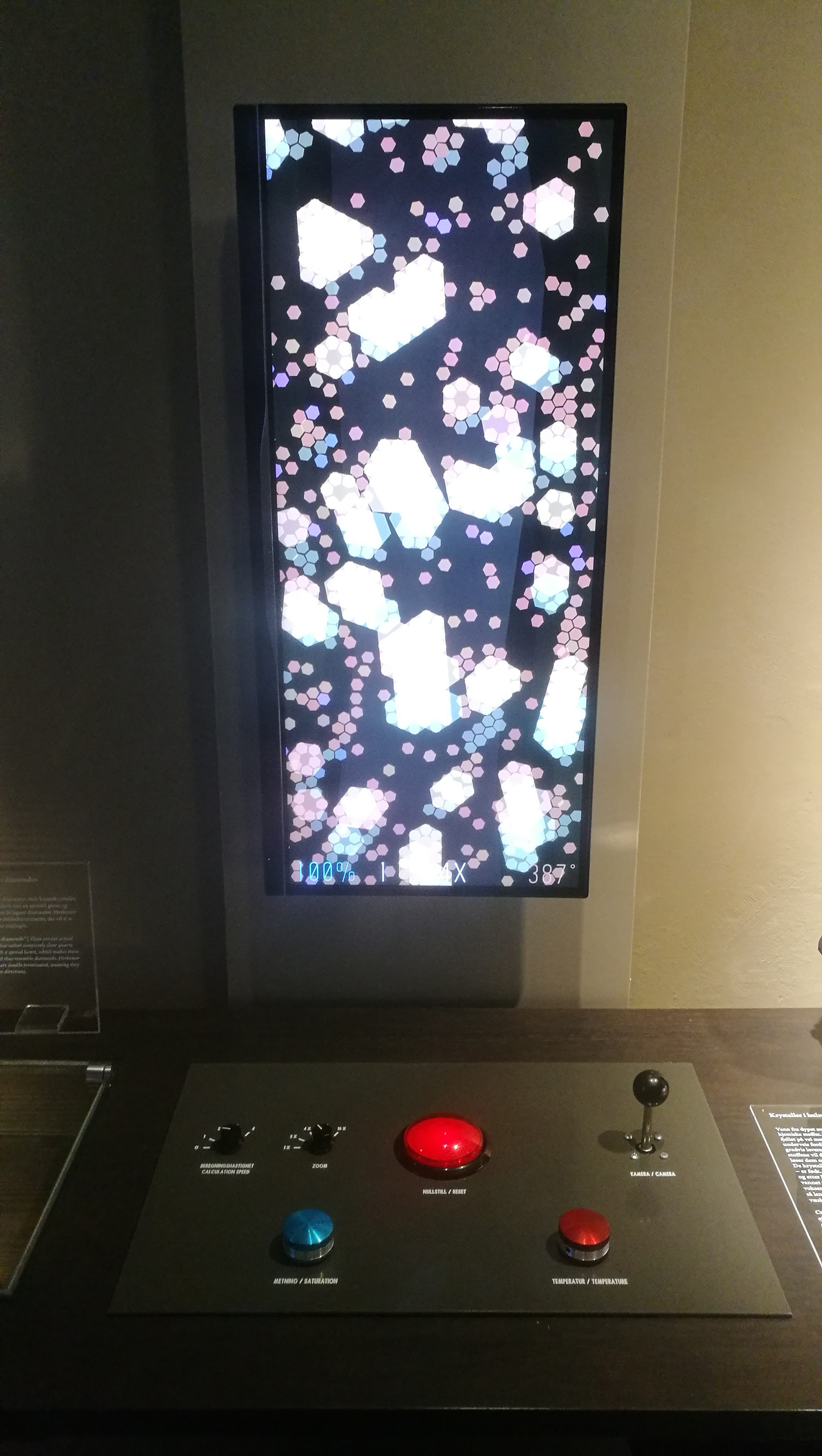
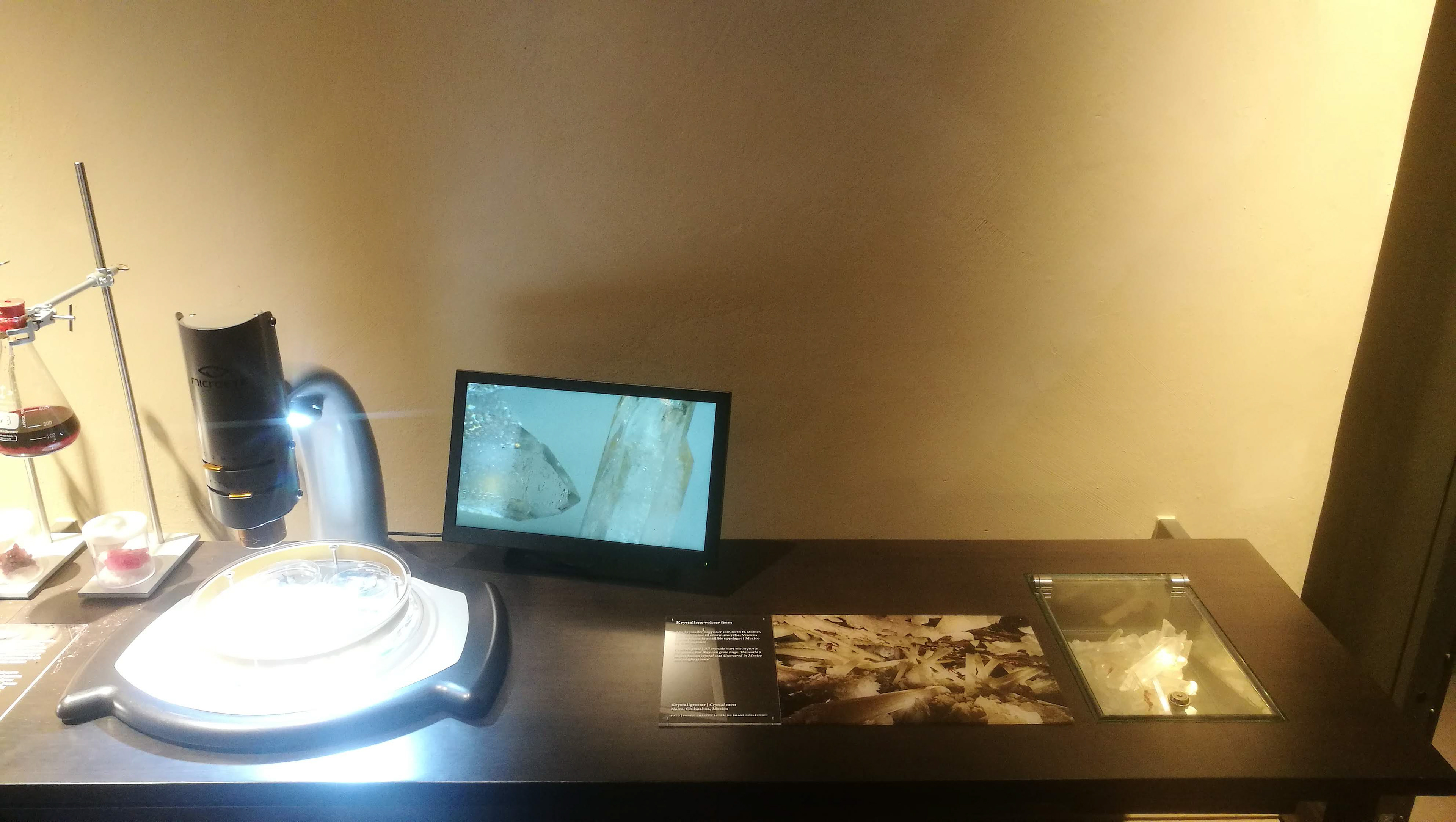
Crystals tend to be fragile and desireable, hence the cabinets, but we had a lot of larger crystals as hands on objects, including this monster quartz, thought to be Norways largest crystal. We sat it proudly on the central contemplation sofa, King Quartz, surrounded by his subjects.
This explosion of quartz was my personal favourite. It had a dusting of grey crystals on its surface which gave it a ghostly appearence.
Reflections, refractions and interactions, with information on clear perspex just adding to the impression glittering light. All mounts in brass, hand made by Reece Whitehead, an unstoppable problem solver with an eye for elegance and economy.
I'm a fan of micro filming. I worked again with director of photography Stein Stie and microtech scientist Erik Johannessen of USN. After many experiments we settled on good old table salt to film crystals growing.
Not only do they grow quickly in real time, we were even able to capture the layers of growth building up in racing wavefronts of atomic structure. The scale on the wall indicates that the 10 metre wide room is 1mm wide at this scale!
More easy to use microscopes, in some ways wonderfully redundent as crystals look the same at differnt scales! Though some are of course too small to see unaided.
Gypsum was our example of just how big crystals can get, in this Nat Geo photo of the famous Naica caves in Mexico. (Photo credit: Carsten Peter, NG Image Collection). We chose a gypsum crystal from the collection that looked similar, and I painted scale railway figures to match. Thanks to our brilliant assistant geologist Andreas Lambach Viken for sourcing the perfect figures. He also set up our fabuolous thinslice microscopes, cutting and polishing the stones himself.
The activity bench. A hive of activity when the museum is open. Here we go beyond mortal sight with an atomic level arcade game written by Erik Svedäng whose genius programming, combined with Øystein Jansens knowledge of crystal growth and a good deal of flow charts and symbolic logic crunching from me, led to this interaction. The complex relationship between crystal growth type, tempurature and solution saturation is learnt intuitively through the fingertips.
Satisfyingly robust and smooth arcade controls, allowing the public to directly control key parameters in the simulation. They can also increase or decrease the rate of computing cycles, effectively speeding up time. Some combinations require enormous amounts of time to yield results, but we do not require patience from our audience!
Of course, some actual growing crystals that change all the time.
These guys have escaped from the mini cabinet and found their way into a gypsum crystal in the main cabinet.
